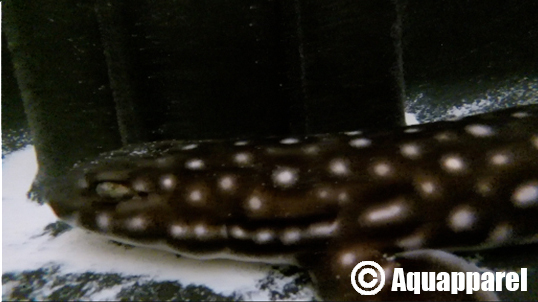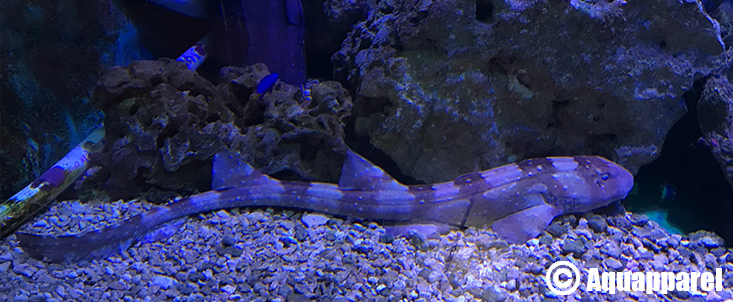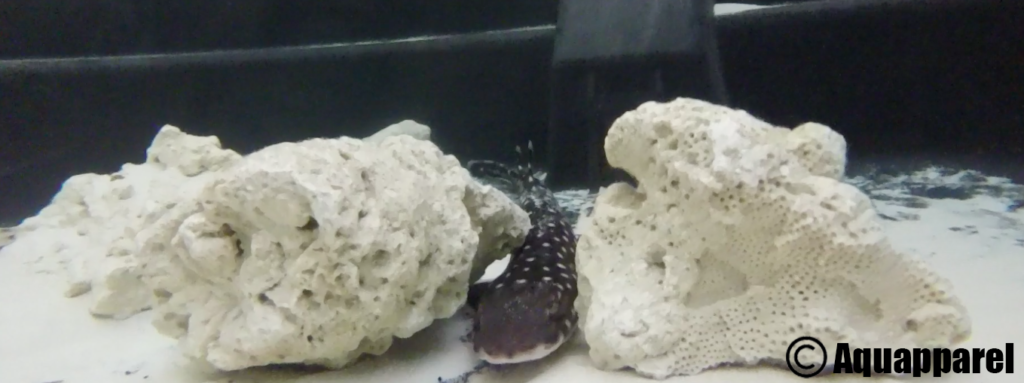This is the Coral Cat Shark.

I have kept a few over the years. They are a very unique looking benthic or bottom dwelling shark.
This shark was first discovered in 1830 by zoologist Edward Turner Bennett. Its original scientific name was Scyllium marmoratum. The word marmoratus in latin means “marbled”. This species is sometimes confused with the White Spotted Bamboo Shark – which more commonly is referred to as the Marbled Cat Shark.

In 1913 Samuel Walton Garman a naturalist/zoologist placed this species in his newly created genus Atelomycterus. Which is where this shark got its current scientific name from – the Atelomycterus marmoratus.

Here are some interesting facts about the Coral Cat Shark:
- The Coral Cat Shark’s body is very slender. They look like this as pups and like this as full grown adults. My shark Yoshi’s coloring faded about 6 or 7 months before he recently passed away from old age.
- They have a protective eye lid that covers their eyes during the day. This lid comes up from the bottom instead of down from the top like ours.
- The slender body of the Coral Cat Shark allows it to navigate through small spaces in the coral reefs
- From my experience this species is pretty lazy and I have read that in the wild, it is not uncommon for them to lay around and wait for their prey to close enough for them to strike while still laying down on the sand bed.
- The Coral Cat Shark is oviparous with the female producing only 2 eggs at a time. The pup or baby shark will develop over a period of 4 to 6 months when the shark will exit the egg case.
- From my experience this shark is very docile and likes to be left alone so that it can rest on the sand bed. They do seem to like hanging out with the other species of sharks and you can usually find them laying right next to any other shark that is in their system in captivity.
Their current status in the wild according to the IUCN Red List as of April 30th, 2003 is Near Threatened. There is also not currently an action recovery plan in place to help re-populate these species in the wild. If you are watching this and you breed this species please get in touch with me so that we can see what can be done to help the wild populations recover.
Let me know in the comments below which public aquariums have this species on display so that if anyone who is watching this wants to see one in person they can.
Before you make the decision to try to find one of these sharks to keep as a pet, be sure to watch the video below.
If you would like to learn even more, consider enrolling in my online course here: Aquarium Sharks For Beginners
